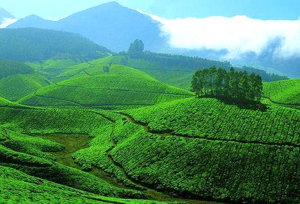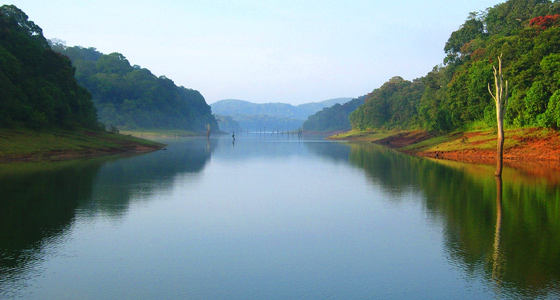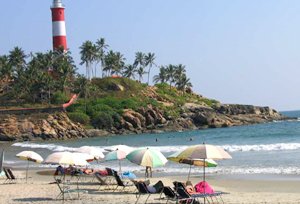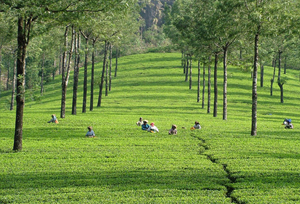What are the things that India is significantly better at than its sister country Pakistan?:
1. Democracy - No matter how much joke we've made out of our democracy, but we are still better than most of the world (and not only Pak) in nurturing and growing our democracy, and in a continuous process of giving equal rights to all sections of society and equal participation in system, which is growing day by day;
unlike Pakistan - where they are still debatingif Army establishment or a new setup (Dr. Tahir Ul Quadri or likes) should replace the democratic setup which is right now being ruled by PPP and allies çoz they are so corrupt.
2. Progressiveness and economy - Since Pak is smaller than us, we should only talk on % age parameters, and in that we have a bigger % age of population working in corporate, IT, Media etc. and we have a growing upper middle class generating more and more purchasing power, and then economy is stably growing, our exports are increasing, so as our share in world trade.
3. Overall Image of India and Indians - Do I need to explain that? Indians everywhere in the world are known for being smart, intelligent, hardworking and worth taking on decision making positions; this is not to say that Pakistanis are dumbs but if we compare the performance of both citizens, India clearly takes the edge!
And fortunately/ unfortunately - what world by large sees Pakistan as is a commonly known fact, terrorism as a state policy is now chewing them up only, and doing more damage to them than what they could ever have done to their so called enemies (Erstwhile India, and now I think western world (plus israel)? or we again?) he he
4. Bollywood (in terms of movies/ arts as well as in terms of Industry/ commerce) - No match from Pak, absolutely no match! Their artists come here (and die to come here and work) since how we remunerate and respect art and artists here has never ever happened in Pakistan.
Even in sports, as Shoib Akhtar said in an interview with Rameez Raza many years back - had Waseem Akram, Imran Khan be in India, they would've been getting something light years more than what they received in Pak (money, respect, revering etc.).
5. Secularism - No matter how much people shout on one Gujrat or Ayodhya Ji and so on; we are truly a secular nation, and more than any other nation in this world! If a Muslim, Sikh, Christian, Parsi, Hindu or anyone else aspire to do any big or small job (even PM, President, Chief justice and so on) in India then no one is stopping them, unlike Pakistani's traditional mindset and even constitutional clauses that treat minorities as not as complete citizen as majority there is.
6. We've eradicated polio almost completely.
7. Infrastructure, transport (road, rail, sea, air)
8. Defense and honor - No matter how much Pak media or traditional Pakistani mindset say about results of wars, India has won all wars with Pakistan (including 65, yes - including 65 my Pakistani friends). Moreover, a 90 K soldiers surrender at the mercy of gallant, professional, and merciful Indian Army men is one of its kind of even in modern mankind's history! And guess what? We ensured them complete safety and sent them back with due honor, I wonder if any other mighty Army in this world will have guts to act like this with an arch rival.
10. Unity in diversity - Way more than what Pakistanis could ever imagine, I know Kashmir (which is more of an issue created by Pak only, and now the issue is almost dead), rest of India despite so many hundreds of languages, religions, regions, food habits, complexions, races and all have equal craze for the nation; and we hardly conflict with each other in real life (can't be sure if it happens on internet lolz).
On the other side, just look at Pak - Sindhis (Especially karachi), Punjabis (dominant as 70 % of total country), Baloochs (internal conflict - armed one!) are yet to become Pakistanis as one generally. And then, even being a religious state - they have a lot of differences between hardliners, armed hardliners, modern thinkers, liberals and so on; India too has such debates but not armed one, though maoism (armed) is a pain in ass for us as well, but it is a class struggle inside a nation and not against nation.
11. Sports - Besides cricket, India is growing well in athletics, boxing, wrestling, hockey as well and better than Pak - this also nullifies the popular mindset in Pak that Indians are physically inferior then them (I don't from where it came in their minds but I know they have this); l laugh at that since if they want their nation to be compared with India, they should only consider our North Indian part as it is more similar to their most nation, and man - our Punjab region (again, hryana, punjab, rajasthan, delhi/ ncr, easter UP, hp etc.) has equal or more stronger races physically (and then economically, equality wise too). If they have Gujranwala producing wrestlers (famous in their nation only though) then we have whole Haryana, UP, Punjab and also Andhra doing the same and grabbing Olympic medals too; and we can then talk similar about boxers too!
Moreover, our strong men (Pakistanis love to be compared physically we know! :)) are utilizing their physical prowess in sports, services, and in constructive things on national and international level; their strong guys are mostly only good to scare their own people around, or just to be shown at bagah border, or to the maximum speaking against India (which is not their enemy, but a boogeymen created over decades for them!) and their Nation has already sacrificed a lot of their happiness and prosperity just because they kept hating India and treating as potential threat, this thought has consumed their efforts which could've been utilized in areas good for their citizen and mankind as a whole!
12. Command on English - India by large is much better in English as compared to Pak by large, can't be decisive on grammer but man - even their main stream TV anchors and LEADERS pronounce simple world "Screen" as "SaKreen" he he - I remember Junaid Saleem here lolz, I also remember Raza Riyaz here (Leader of opposition of Pak Punjab) who was criticizing his political opponents as - In log ne hamarey POSHTER PAAD DIYE AUR FER YE BAARLEY MULAK MEIN BHAAG JATE HAIN and repeated that too!! It was hilarious!!
13. And so much more, my fellow Indian/ Pakistani friends' - you may feel free to add more and try to be impartial (I couldn't kept that though during the end as I can see that and apologies for that - , kya karein - barson se ye comparison chalta hi a raha hai, and both sides have a knack of creating own parameters for comparison to prove their part as better, and I was not untouched with that too!
![shrek-the-sheep-1[6]](http://www.amazingwebs.org/wp-content/uploads/2015/09/shrek-the-sheep-16.jpg)
![shrek-the-sheep-3[6]](http://www.amazingwebs.org/wp-content/uploads/2015/09/shrek-the-sheep-36.jpg)
![shrek-the-sheep-5[6]](http://www.amazingwebs.org/wp-content/uploads/2015/09/shrek-the-sheep-56.jpg)
![shrek-the-sheep-6[5]](http://www.amazingwebs.org/wp-content/uploads/2015/09/shrek-the-sheep-65.jpg)
![shrek-the-sheep-7[9]](http://www.amazingwebs.org/wp-content/uploads/2015/09/shrek-the-sheep-79.jpg)
![shrek-the-sheep-9[6]](http://www.amazingwebs.org/wp-content/uploads/2015/09/shrek-the-sheep-96.jpg)
![shrek-the-sheep-4[2]](http://www.amazingwebs.org/wp-content/uploads/2015/09/shrek-the-sheep-42.jpg)
![shrek-the-sheep-10[3]](http://www.amazingwebs.org/wp-content/uploads/2015/09/shrek-the-sheep-103.jpg)
![shrek-the-sheep-8[6]](http://www.amazingwebs.org/wp-content/uploads/2015/09/shrek-the-sheep-86.jpg)
![shrek-the-sheep-2[6]](http://www.amazingwebs.org/wp-content/uploads/2015/09/shrek-the-sheep-26.jpg)





